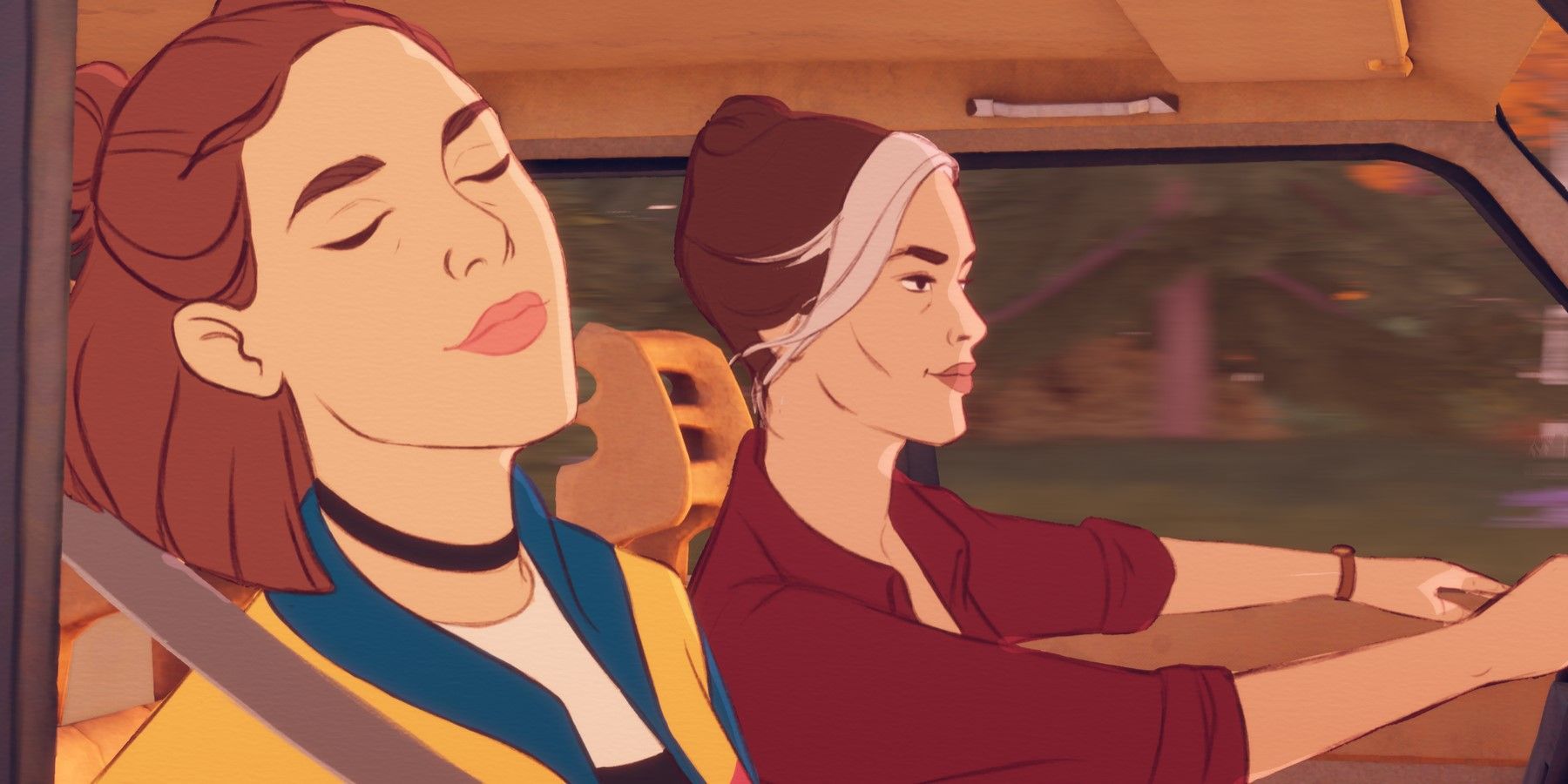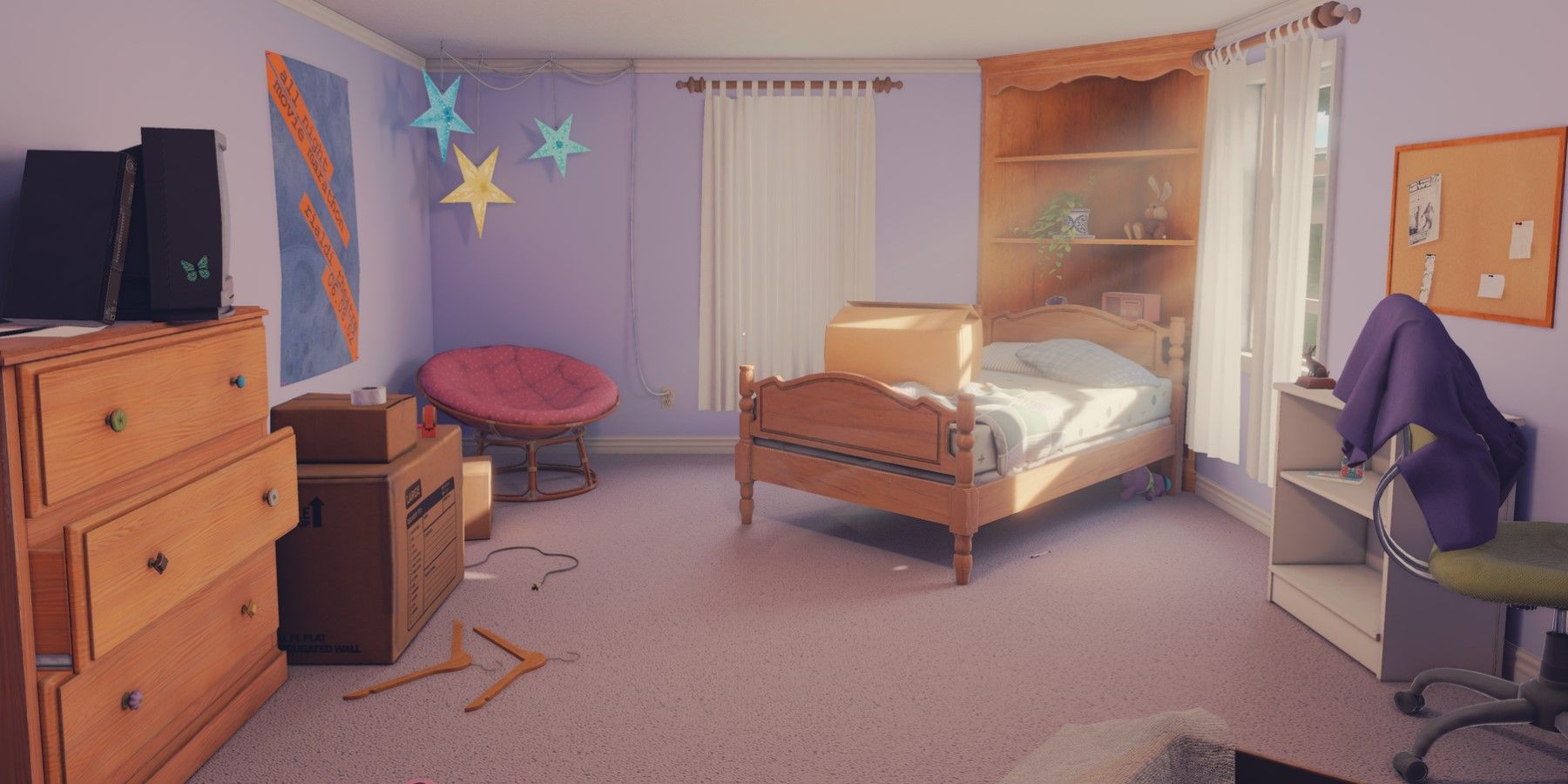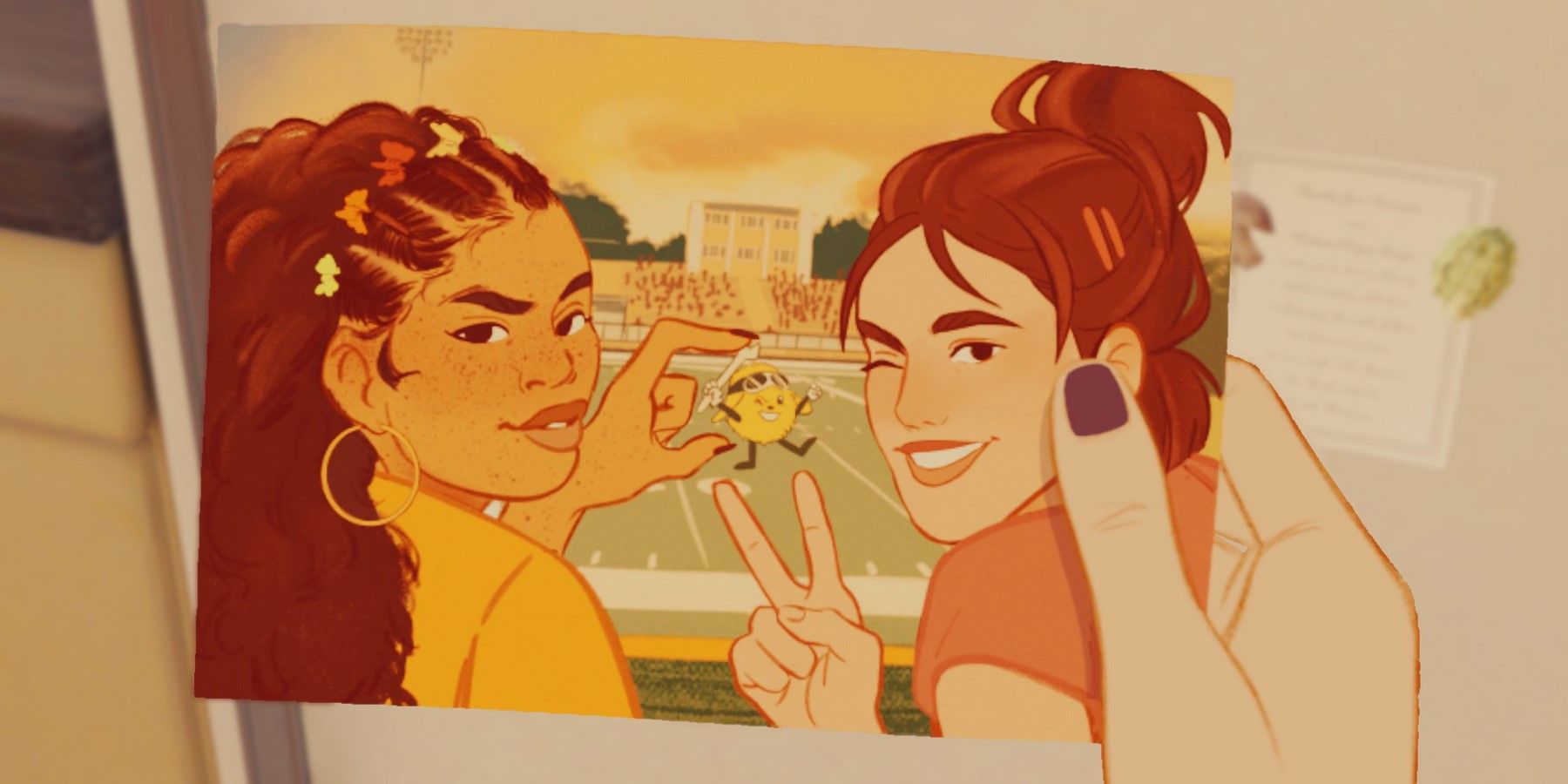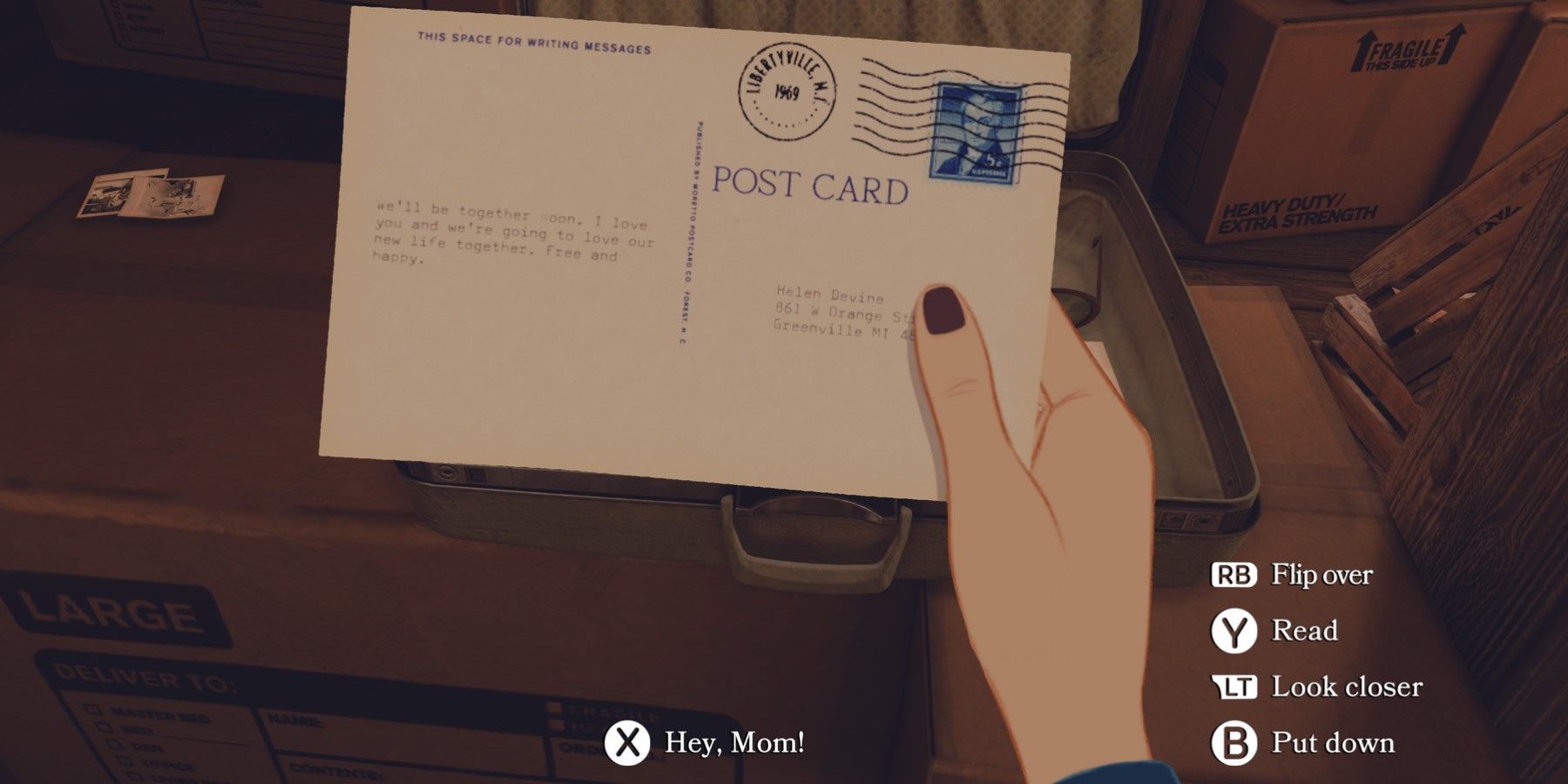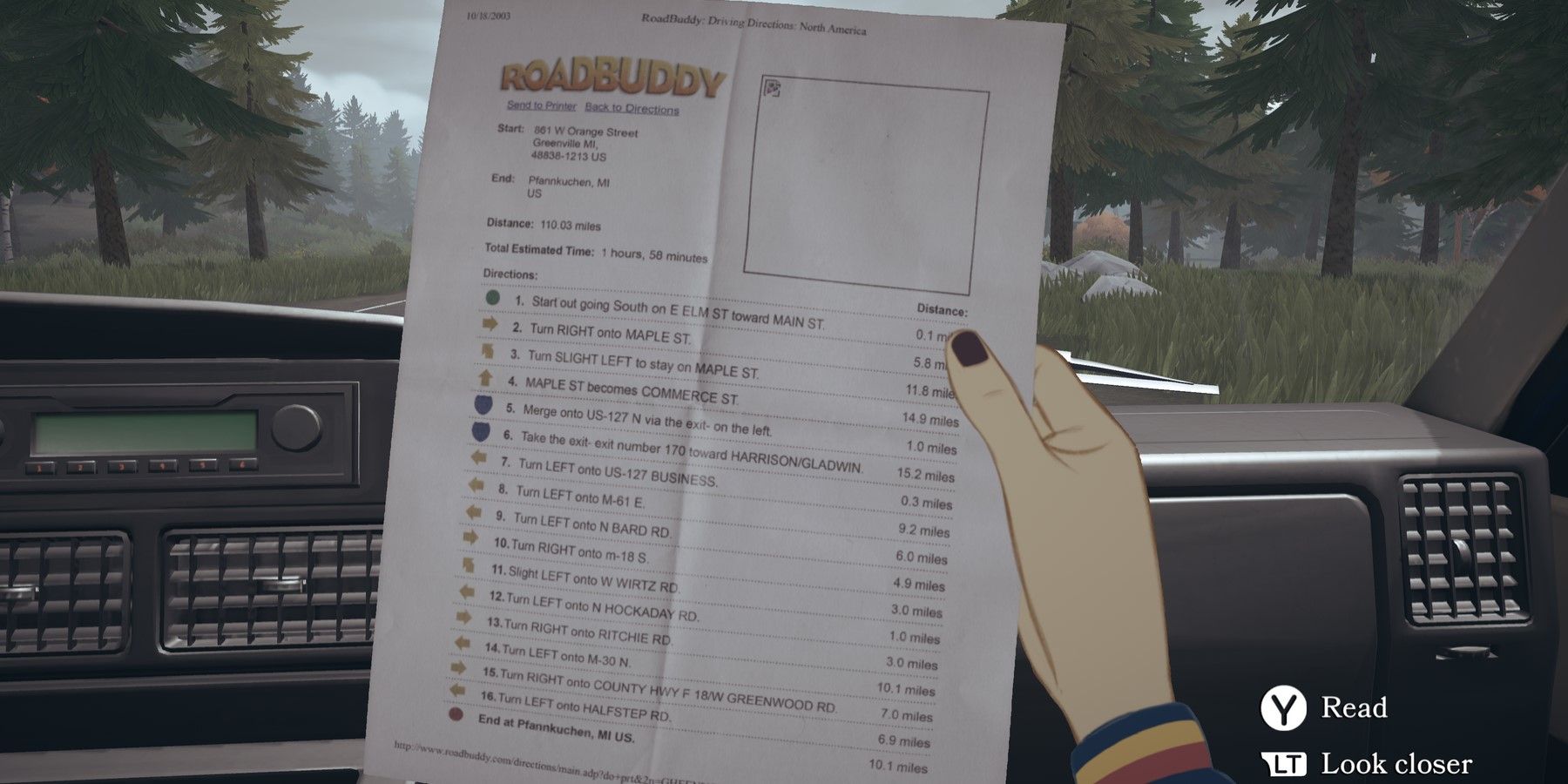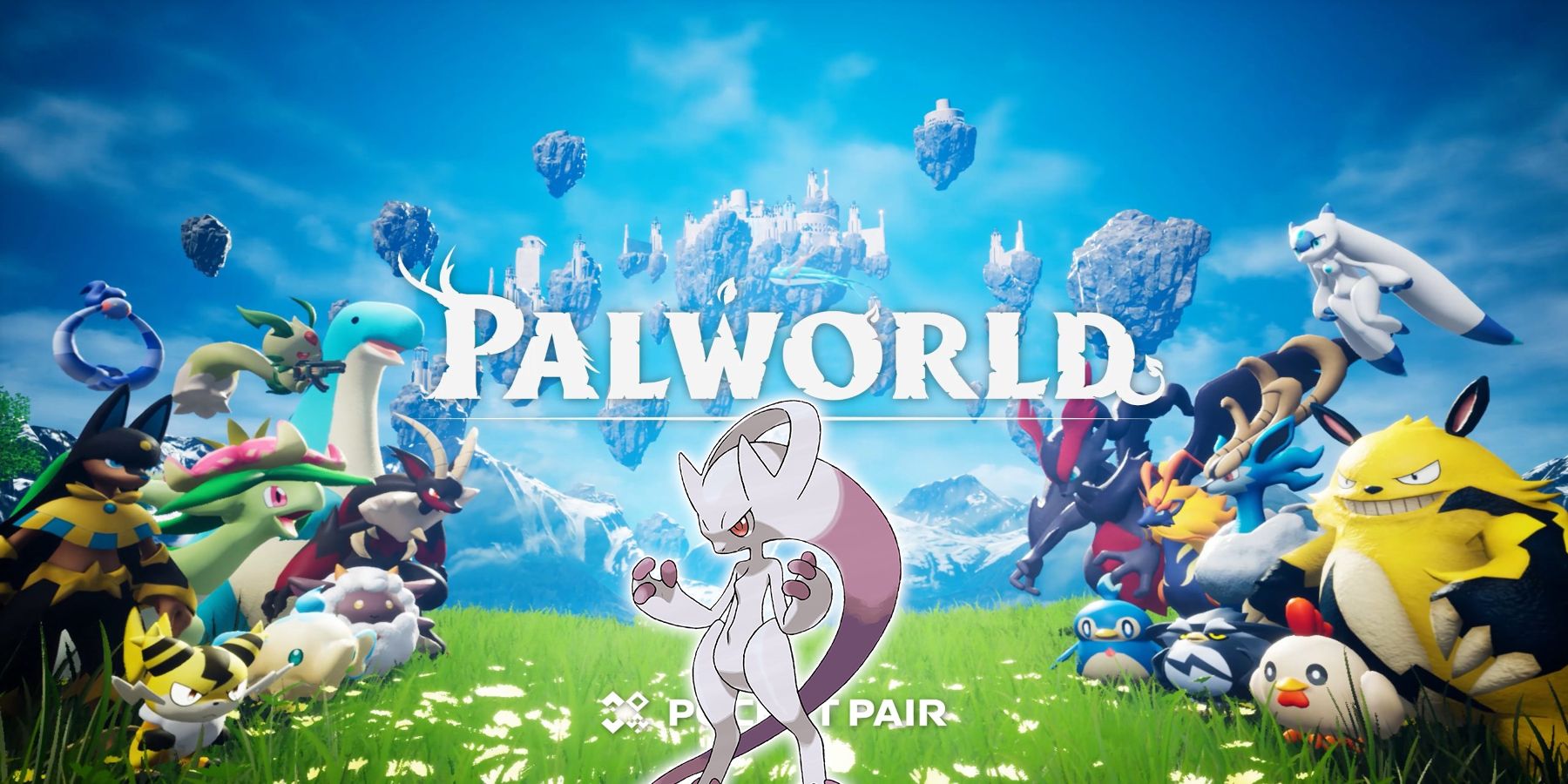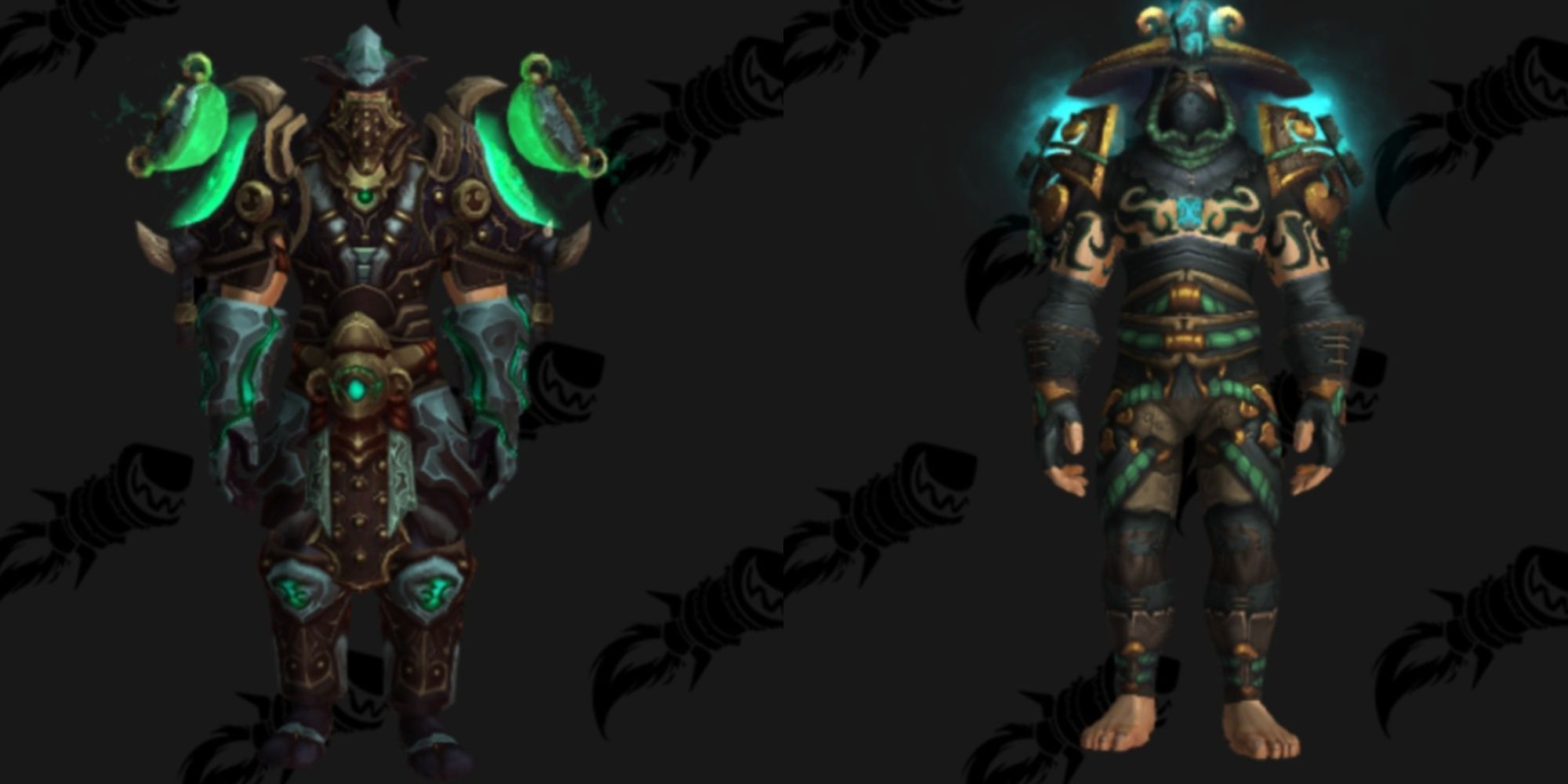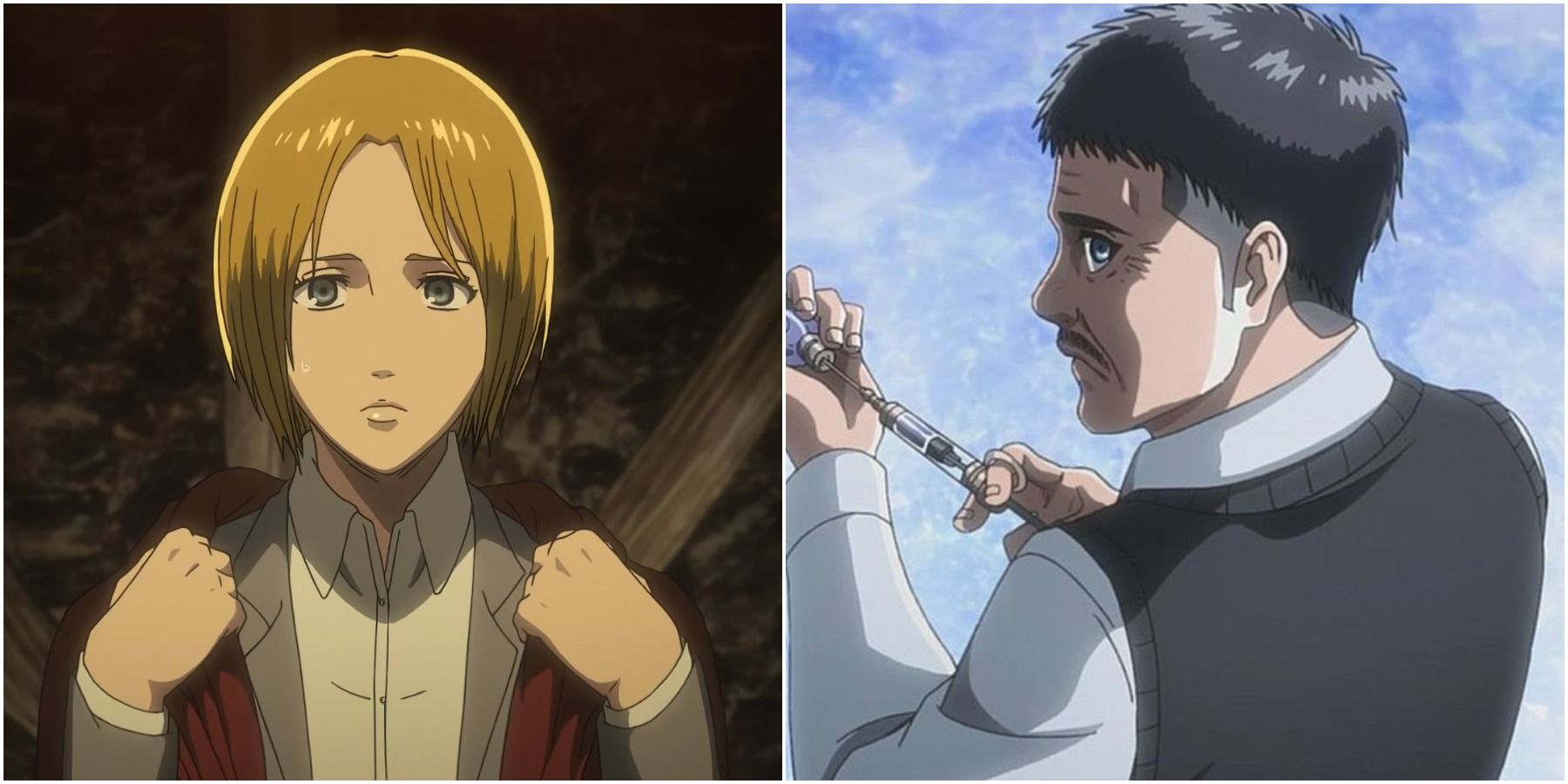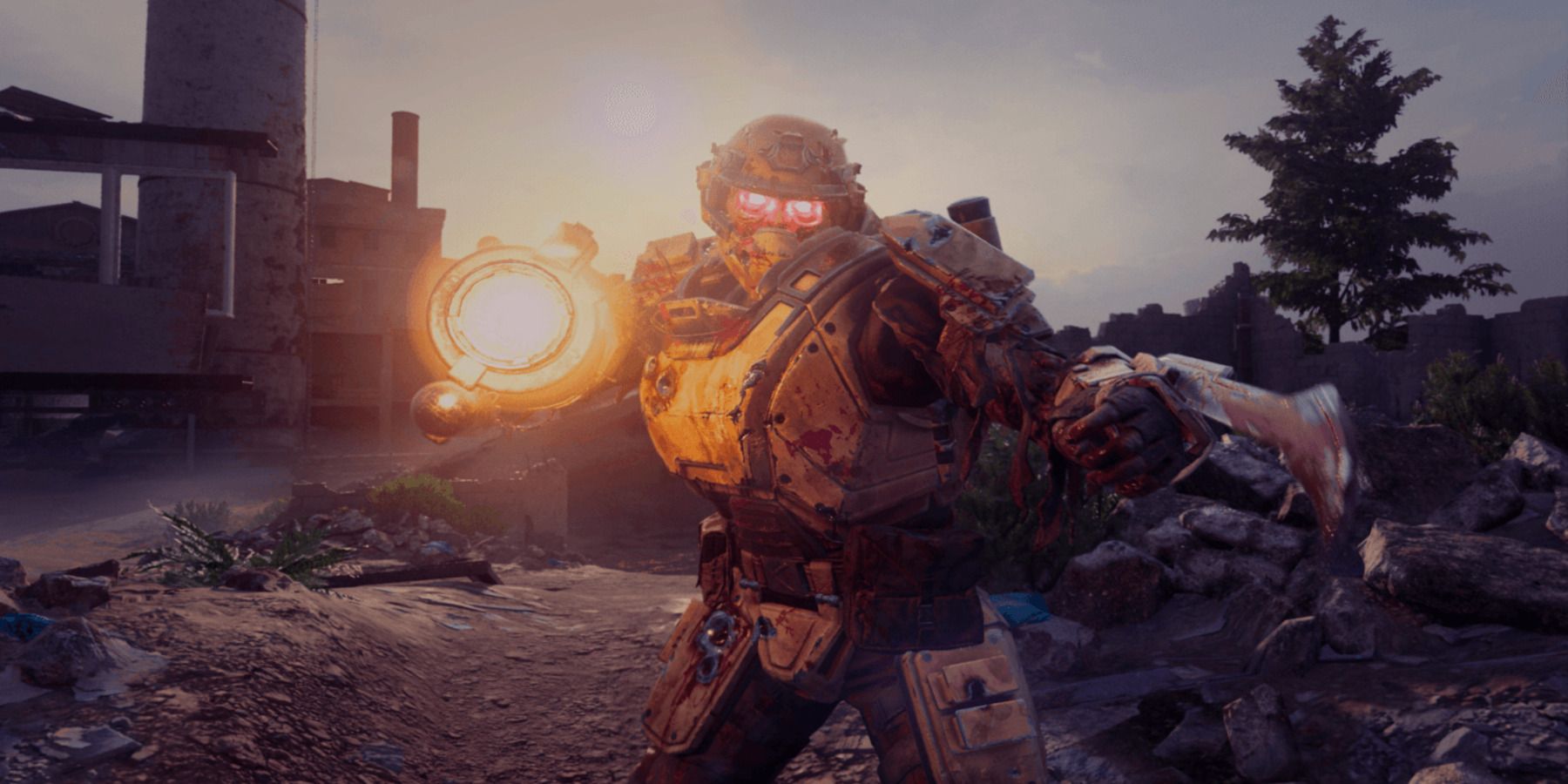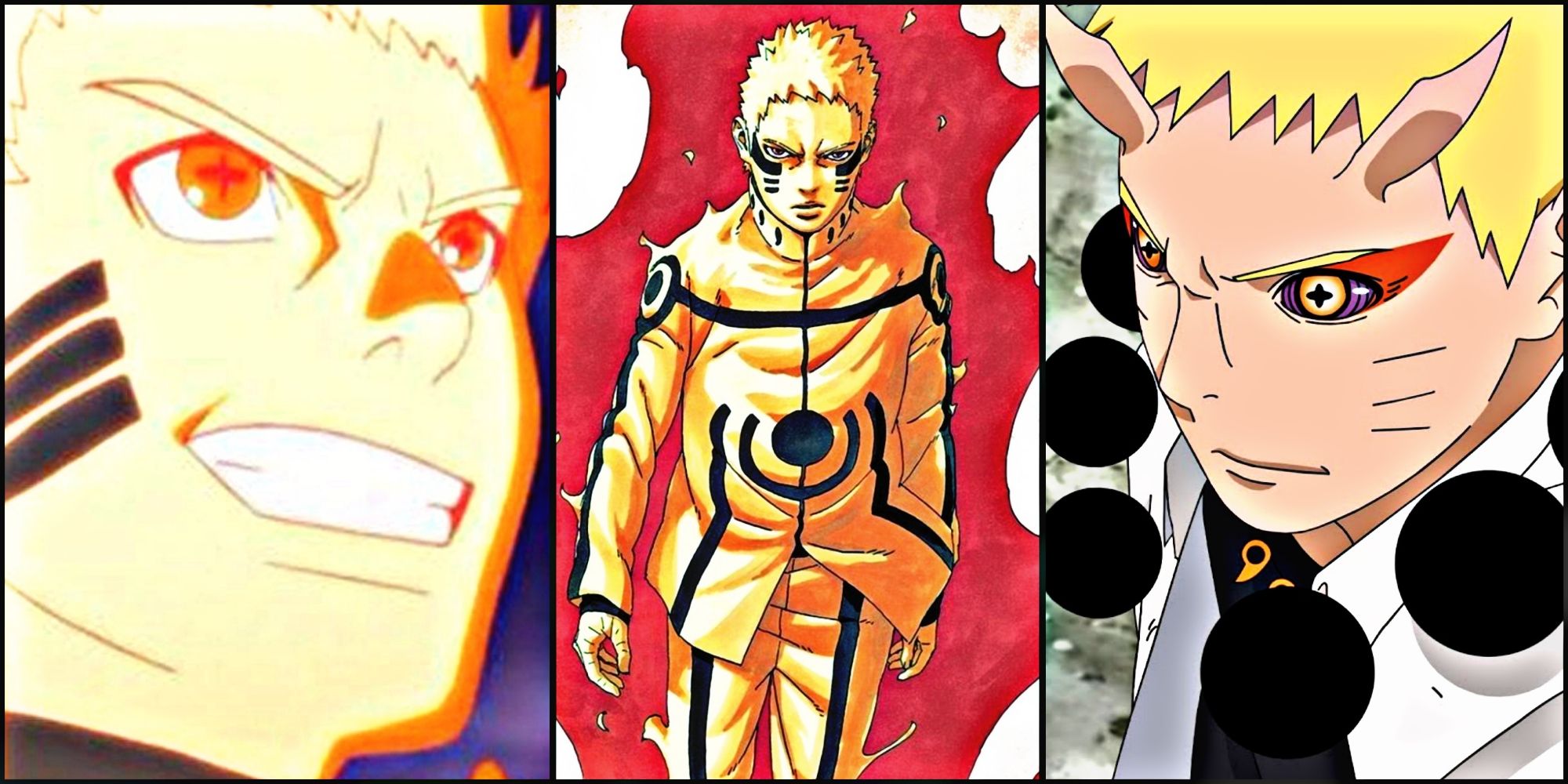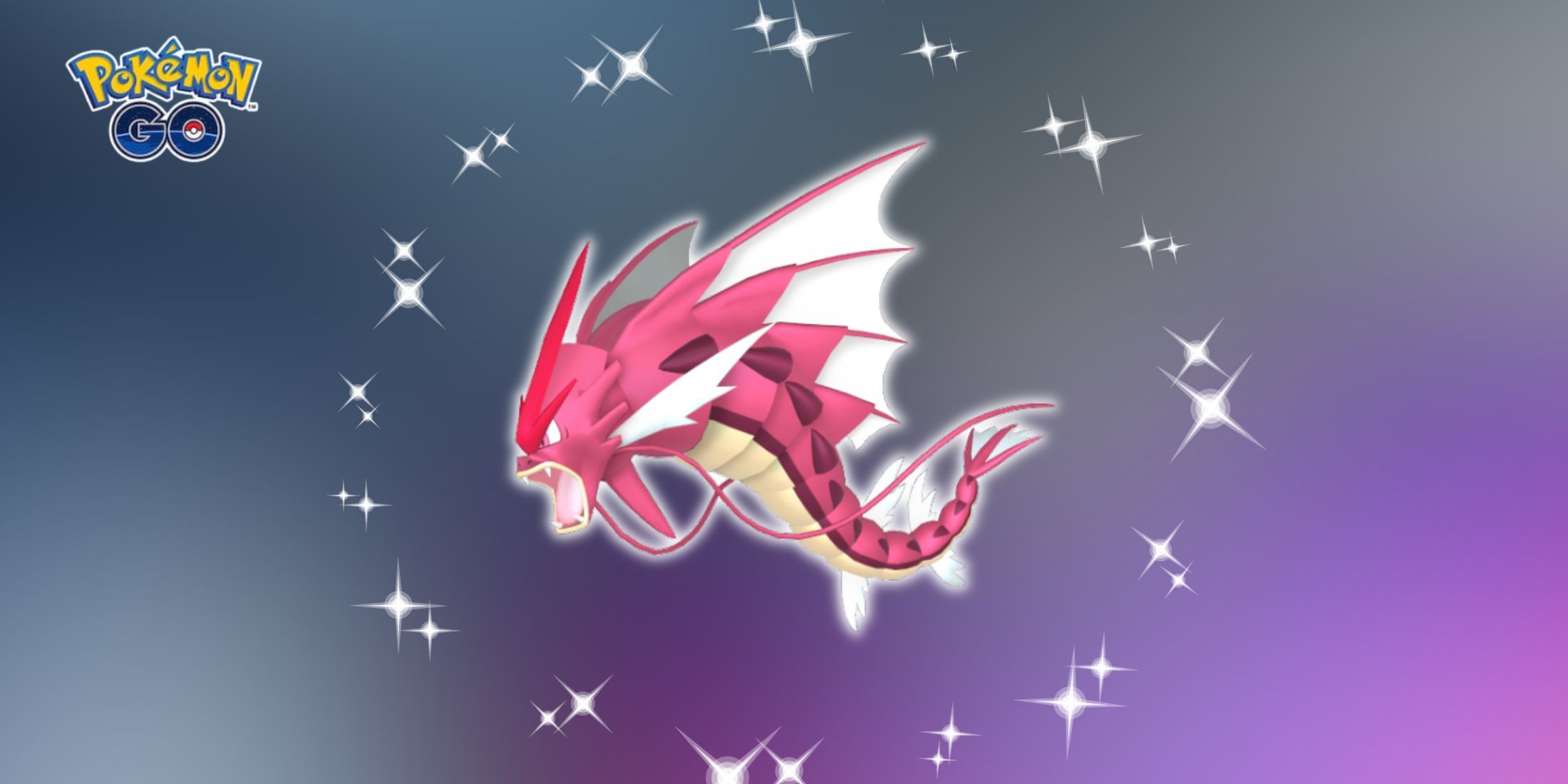Open Roads is many different things. It’s an adventure, a mystery, and an exploration-focused cozy game. It’s also a deep story about a mother and daughter bonding over shared family history, tragedy, and secrets. And it’s also a story about an epic cross-country road trip. Open Roads is the first title from Open Roads Team, set to be published by Annapurna Interactive. The game, which stars Kaitlyn Dever and Keri Russell as mother-daughter protagonists Tess and Opal Devine, is currently scheduled for a February 22 release on multiple platforms.
Game Rant recently sat down with five members of the Open Roads Team: executive producer Amy Fincher, engineering lead Aaron Freedman, art director Noel Clark, operations manager and associate producer Sarah Robinson, and graphic artist Harrison Gerard. The team spoke about the difficulties of developing a game during the COVID-19 pandemic, how they brought elements of their own childhoods into Open Roads’ environment and story, what it was like working with Dever and Russell, and much more. The following interview has been edited for clarity and brevity.
Q: This game has a real sense of existing in its time. When did you decide to set the game in 2003, and what did you do to make it feel like 2003?
FREEDMAN: I don’t remember when it happened. I don’t think we ever made a specific decision like “Yeah, let’s do 2003.”
GERARD: In answer to the second question, we put a lot of effort into making sure that it felt like 2003, so I’m glad to hear that it did for you. One thing is that we really sat down and came up with a list of “What are things that feel 2003 to us?” A lot of the stuff that is in Tess’s room came from that list: the dead Tamagotchi, the LipSmackers chapstick, and the big old Mac computers with the colored plastic on the outside. We really wanted to make sure that a lot of those 2003 keystones were there right away when you started playing, to really ground the player in that time period.
Q: You mentioned that the music is inspired by movies from the 2000s, as Tess is a movie buff. Can you talk about that?
FINCHER: In Tess’s room, if you turn on the radio, the music is an original composition, but it’s kind of inspired by Thomas Newman and his soundtracks for Finding Nemo and Road to Perdition. Around that time, I was listening to those kinds of soundtracks myself. Later on, you’ll hear, in the car radio, some music that is from that period, both pop music and things that fit into the vibe of the game, but are also era-appropriate. The music that is non-diagetic – that the characters can’t hear – is less tied to the period. That’s a little more ambient, more “you’re playing a game in 2024.” But the things that you hear from the world are inspired by films, by the movies of the time.
A lot of the film references you’ll hear are in dialogue. Tess loves to make references to her favorite movies – sometimes she’ll find an object that reminds her of a movie that might have been a recent release at that time. It’s a really sweet part of her character.
Q: Kaitlyn Dever [Tess] and Keri Russell [Opal] do a great job bringing these characters to life. What was it like working with them?
FREEDMAN: The overall quality of their performance is amazing. They really bring the characters to life, and they showed us something very powerful. The loop was: we’d write something, then bring it to them, then take it back into the game to adjust it. This affected a lot of us in different ways. It definitely had a very positive impact on our development process.
Their relationship feels so real, they did an amazing job.
ROBINSON: There’s an interesting challenge that was fairly unique for them to tackle. We have this branching dialogue system. It wasn’t just we provide you with a script, top to bottom, and you’re following a conversation one way to one end. You can more easily reflect emotion in that because you know the path. It’s going to go from A to B, this high to this low, and then back. Whereas we need Option 1 to go high then low, then we need Option 2 to go all high. For example, when Tess says “Hey Mom,” that has to be pretty versatile, because we need to take it in many different directions.
Then we need to close everything back together and have the end of the conversation feel cohesive to any one of the threads that come into it. We unfortunately weren’t able to do ensemble recording for them, so there was a lot of “let’s get through part of the script with one of them, with a stand-in reading the opposite line.” Then, the other one got to hear the first’s performance and respond to that. Next, we had to go back and listen to them back and forth to see, do they feel genuine and flowing? Do we need to adjust anything? Are we filling the particular needs of the system and the dialogue we were writing?
Q: They were really never able to record together?
CLARK: Nope! But you can’t tell because it feels so organic!
FINCHER: I think part of the reason why you get the illusion of the two actors being in the booth together is that, a lot of the time, we weren’t recording just one line at a time. We’d act them out as full scenes, so there was a much more natural flow to it. I think that was more comfortable for the actors. The way we structured the dialogue, we tried to make it so that it wasn’t something that felt disjointed. The choices that you make in this game are not about roleplaying as yourself and thinking “I want to take this conversation off the rails” or “I want to be evil.” It’s more about exploring different aspects of Tess’s personality. Every option you have is something that Tess might say. It’s in character for her, but it’s a matter of you as a player. Do you want to poke at Tess’s more snarky side? Or maybe explore the fact that she might feel a little intimidated to push a certain topic with her mom? It’s up to you!
Q: What was it like crafting this hybrid world, with 2D characters and a 3D environment? When was that decision made?
CLARK: The decision to do the 2D characters started really early in production. We started exploring how do you make 2D characters fit in this 3D environment? The examinable items, how do those fit in, and what style are we going with? I think the examinables are really helpful in merging those two elements, as they’re pretty realistic but still 2D, whereas the 2D characters are more stylized and then the environments are a little more realistic. It was really fun and challenging, but I think we kinda got the balance we were looking for.
Q: What challenges did you encounter when designing the 2D-3D world?
CLARK: Getting it to look good together. The 2D characters weren’t built the same way as the world is. We needed to make sure that they still felt like they fit into the environment. We did a lot of exploration and just kind of worked away at it. We have some pretty talented people on the team, and we got it to work!
Q: During the preview, you described Open Roads as “a game for nosy people.” Could you speak more to that?
GERARD: These games have always really attracted the kind of person who likes to look in a medicine cabinet at a party. I think that kind of thrill is a big part of the enticement for these sorts of games. Open up cabinets! Look in trash cans! Read things! Everything has text on it that is relevant, and I think Open Roads really encourages people to be nosy. Embrace your inner Nancy Drew, and poke through everything because you get a lot of good information about the characters – and some fun stuff that we’ve hidden there too.
Q: What advice would you give to players wanting to experience everything Open Roads has to offer?
FINCHER: My advice would be to slow down. Don’t try to rush through the game. Don’t try to find the next objective immediately. If you see something that looks like it might be interesting, check it out. If you find a letter or something that has a lot of writing on it, it’s fine if you don’t want to read it, and you just want to go straight to asking Opal about it. But if you do read it, you will get more insight into the characters and into some of the mysteries that are present.
You can find which mysteries actually might have something to them vs which mysteries are just a fun thing that Opal and Tess joke about. Because Tess has an interest in the paranormal. In that period – well it’s really a 90s thing, but still present in the early 2000s – teens like myself were really into things like The X-Files. For example, Tess finds something and says “Maybe I shouldn’t ask Mom.” You can just put it away if you don’t want to get into her business, but you can read the whole letter. You’ll get a lot of insight into the relationship between Opal and her sister August if you do.
FREEDMAN: I think it’s also important to add that we leave it pretty open for the players to decide how much they want to be nosy or not. Not being especially nosy is also a very valid way to play the game as well. Only in a very few limited cases, where it’s specifically relevant to the core story that we’re telling, do we actually require the player to look at anything. It’s for the player to put together all the extra bits and whatever extra commentary that they feel they want.
Q: Would you say that Open Roads is a game that you can play through multiple times?
FREEDMAN: Definitely! I think that the fundamental story won’t change, but you can definitely explore it in different ways.
FINCHER: Something that surprised us a little bit during playtesting is that, because we’re so used to where all the objects are and we know which ones are important, we assumed people would find everything their first time through. But, a lot of time we find people think they’ve explored things thoroughly, but they haven’t found every Opal conversation or they haven’t found every juicy note. That’s something you can get from multiple playthroughs. You can also explore different aspects of the characters. As we showed off in the Open Roads preview, Tess can find a broken plate, and she can ask Opal about it in a way that’s a little too pushy. Opal says “I don’t know, I don’t know what happened.” But, if you choose a different answer, you might be able to find out the full story there. You won’t be able to see all of those conversational threads unless you play through the game multiple times.
Q: Open Roads centers around the road trip Opal and Tess take. Are you guys big road trippers? What are some elements of road trips you took that you incorporated into the game?
GERARD: We totally are! One thing in particular for me, we did road trips all the time as a kid, and I found them horrifically boring. We tried to get the vibe of “what is the most interesting part of being bored in a car on a road trip” and explored how we could distill that into the game.
FINCHER: My family traveled a lot when we were young – my folks hate flying, so it was always long car trips. I can relate to the childlike experience of entertaining yourself in the car or annoying your parents. With Opal, you have the option to annoy her in various ways if you want to. That wasn’t me when I was a kid, though! That was always my sister! During the development of the game, I actually found myself on the road quite a bit because it was during the peak COVID lockdown era and I didn’t want to go on planes. I would go and visit my folks quite often, which was about an 18-hour drive, which I made multiple times, not always alone.
I got a lot of hands-on experience with long conversations or finding stuff on the radio because I ran out of data on my phone. Some of the trips were for sad reasons, and I would find myself at the home of a family member, looking through their stuff and asking family members questions about it. It really got me into the mindset of the characters, especially when we were doing additional writing and creating new dialogue for the game. I found that I could relate to Tess and also to Opal.
As an adult with a lot more life experience, I felt a lot of empathy for both characters. I’m not the person who likes to annoy people in the car, but I’ve been in the car while that was happening. I think we were able to make those sequences feel authentic, whether they’re silly and fun or in a situation where you’re stuck in a car having an uncomfortable conversation with someone that you can’t escape from.
Q: Anything else you’d like to add?
FREEDMAN: We’re very excited for you to be able to play the full game. I think you’re definitely going to enjoy the full experience, and hopefully play it more than once and tell many people about it!
FINCHER: Something important to know about this game is it’s a treat for folks who are already into story and exploration games and cozy games. But I think it’s also a great opportunity for people who don’t game as much or find that a lot of games are too stressful or physically challenging. It’s a slow-paced, cozy experience, it’s personal, and its story focuses on an unusual topic. It explores multiple generations of relationships between mothers and daughters but also sisters, aunts, and grandmothers. I think there’s a lot to enjoy in this game. I’d love to see people who aren’t already habitual gamers give this one a try.
Open Roads is set to release on February 22 for Nintendo Switch, PC, PlayStation 4, PlayStation 5, and Xbox Series X/S.
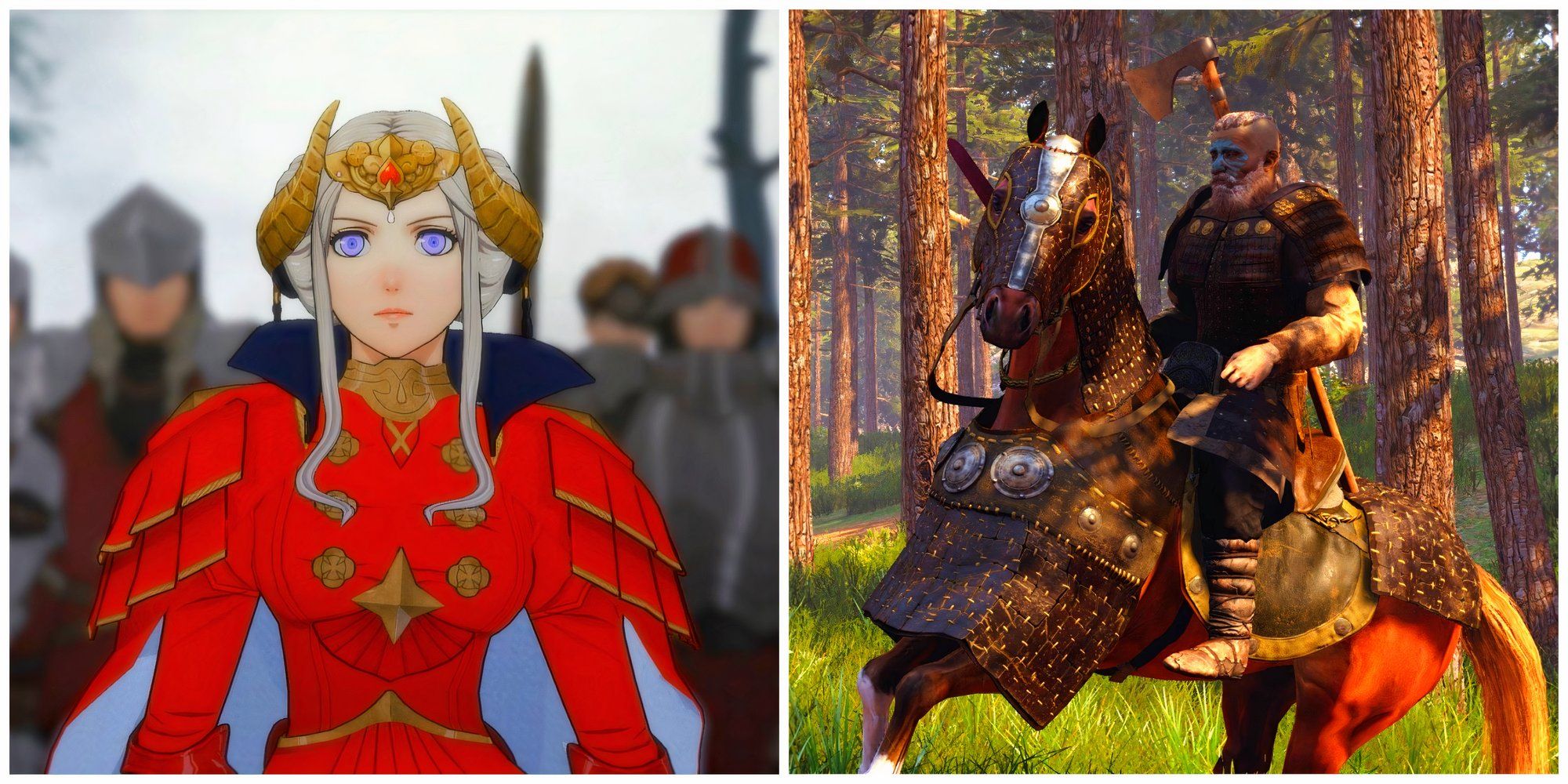
/cdn.vox-cdn.com/assets/3729887/her_promotional_images30_1020.jpg)
